 W
WJohn Francis Arundell, 16th Baron Arundell of Wardour JP TD was a British soldier.
 W
WGroup Captain Sir Douglas Robert Steuart Bader, was a Royal Air Force flying ace during the Second World War. He was credited with 22 aerial victories, four shared victories, six probables, one shared probable and 11 enemy aircraft damaged.
 W
WThe Colditz Cock was a glider built by British prisoners of war for an escape attempt from Oflag IV-C in Germany.
 W
WGenerał Tadeusz Komorowski, better known by the name Bór-Komorowski was a Polish military leader. He was appointed commander in chief a day before the capitulation of the Warsaw Uprising and following World War II, 32nd Prime Minister of Poland, 3rd Polish government-in-exile in London.
 W
WDominic Bruce, was a British Royal Air Force officer, known as the "Medium Sized Man." He has been described as "the most ingenious escaper" of the Second World War. He made seventeen attempts at escaping from POW camps, including several attempts to escape from Colditz Castle, a castle that housed prisoners of war "deemed incorrigible".
 W
WMichael Clive Burn, MC was an English journalist, commando, writer and poet.
 W
WAlan Robertson Campbell, Baron Campbell of Alloway ERD QC was a British judge, barrister and author who sat in the House of Lords as a life peer.
 W
WGen. Antoni Chruściel was a Polish military officer and a general of the Polish Army. He is best known as the de facto commander of all the armed forces of the Warsaw Uprising of 1944, as well as Home Army's chief of staff.
 W
WYves Marie-Joseph Congar was a French Dominican friar, priest, and theologian. He is perhaps best known for his influence at the Second Vatican Council and for reviving theological interest in the Holy Spirit for the life of individuals and of the church. He was created a cardinal of the Catholic Church in 1994.
 W
WDamiaen J. van Doorninck was a Dutch officer and a prisoner of war in Colditz.
 W
WJohn Alexander Elphinstone, 17th Lord Elphinstone and 3rd Baron Elphinstone was a British nobleman and serviceman during World War II. He was a first cousin of Queen Elizabeth II.
 W
WThomas Ion Victor Ferguson known as Ion Ferguson Royal Army Medical Corps was an Irish volunteer for the British army who escaped from Oflag IV-C, Colditz Castle, during the Second World War.
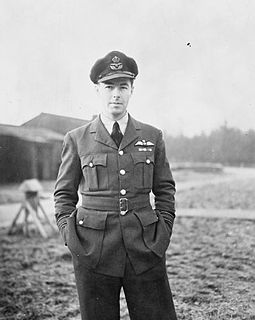 W
WHedley Nevile 'Bill' Fowler was a British Royal Air Force pilot who became a prisoner of war and successfully escaped from Oflag IV-C at Colditz during the Second World War.
 W
WThe Colditz Cock was a glider built by British prisoners of war for an escape attempt from Oflag IV-C in Germany.
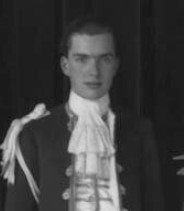 W
WGeorge Alexander Eugene Douglas Haig, 2nd Earl Haig, was a British artist and peer who succeeded to the earldom of Haig on 29 January 1928, at the age of nine upon the death of his father, Field Marshal the 1st Earl Haig. Until then he was styled Viscount Dawick. Throughout his life, he was usually known to his family and friends as Dawyck Haig.
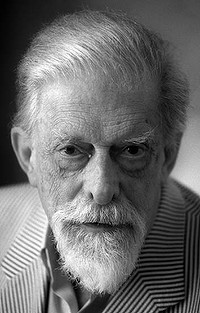 W
WGeorge Henry Hubert Lascelles, 7th Earl of Harewood,, styled The Honourable George Lascelles before 1929 and Viscount Lascelles between 1929 and 1947, was a British classical music administrator and author. He served as director of the Royal Opera House, chairman of the board of the English National Opera (ENO) (1986–95); managing director of the ENO (1972–85), managing director of the English National Opera North (1978–81), governor of the BBC (1985–87), and president of the British Board of Film Classification (1985–96).
 W
WCaptain Richard Herbert Howe was a British army officer during World War II. He was captured by the Germans in 1940 and eventually held in Oflag IV-C, at Colditz Castle, where he served as Escape Officer from 1942 to 1945. He organised many escapes including eight successful home runs of British officers.
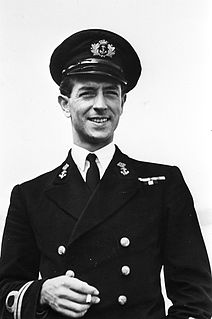 W
WEtienne Henri "Hans" Larive, MWO, DSC and bar, was a Dutch naval officer during World War II. He escaped from the prisoner of war camp Oflag IV-C at Colditz Castle in 1941, and spent the rest of the war in England serving aboard Motor Torpedo Boats. He later wrote his memoir Vannacht varen de Hollanders (1950), which was republished translated into English as The Man Who Came in From Colditz (1975) – a pun on the best-selling novel The Spy Who Came in from the Cold.
 W
WAlain Le Ray was a French general and Resistance leader.
 W
WCharles William Frederick Hope, 3rd Marquess of Linlithgow MC was a British peer and businessman.
 W
WDesmond Wilkinson Llewelyn was a Welsh actor, best known for his role as Q in 17 of the James Bond films between 1963 and 1999.
 W
WAbraham Pierre Tony Luteyn was a Dutch officer who successfully escaped from the German prisoner of war camp of Colditz. Sometimes he is referred to as Anthony Luteyn.
 W
WPierre Marie Jean-Baptiste Mairesse-Lebrun was a French Army cavalry officer who became famous for his daring escape from Colditz castle, Oflag IV-C. He was born in Bauzy, Loir-et-Cher.
 W
WCharles Cecil Ingersoll Merritt VC, ED was a Canadian recipient of the Victoria Cross and Member of Parliament.
 W
WFlight Lieutenant Walter McDonald Morison was a Royal Air Force pilot who became a prisoner of war and was sent to Colditz for attempting to steal an enemy aircraft during the Second World War.
 W
WAirey Middleton Sheffield Neave, was a British soldier, lawyer and Member of Parliament.
 W
WMajor Anthony Peter Roylance Rolt, MC & Bar, was a British racing driver, soldier and engineer. A war hero, Rolt maintained a long connection with the sport, albeit behind the scenes. The Ferguson 4WD project he was involved in paid off with spectacular results, and he was involved in other engineering projects. At his death, he was the longest surviving participant of the first ever World Championship Grand Prix at Silverstone in 1950. He was one of the last pre-war winners remaining too – he won the 1939 British Empire Trophy, aged just 20 in 1939 – this was after he started his career in 1935, as a 16-year-old, in a 3-wheeler Morgan in speed trials. He won the 1953 24 Hours of Le Mans and participated in three Formula One World Championship Grands Prix.
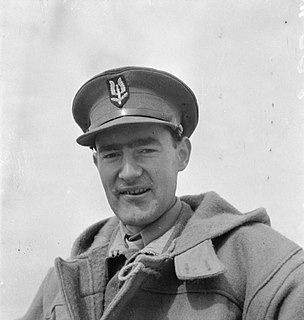 W
WLieutenant Colonel Sir Archibald David Stirling, was a Scottish officer in the British Army, mountaineer, and the founder of the Special Air Service. He saw active service during the Second World War.
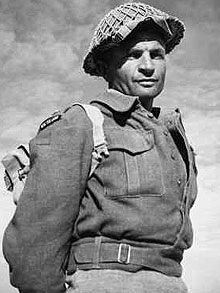 W
WCharles Hazlitt Upham, was a New Zealand soldier who was awarded the Victoria Cross (VC) twice during the Second World War - for gallantry in Crete in May 1941, and in Egypt, in July 1942. He was the most recent of only three people to receive the VC twice, the only one to receive two VCs during the Second World War and the only combat soldier to receive the award twice. As a result, Upham is often described as the most highly decorated Commonwealth soldier of that war, as the VC is the Commonwealth's highest award for gallantry in the face of the enemy.
 W
WHoward Douglas Wardle MC, commonly known as Hank, was a Canadian pilot in the Royal Air Force during World War II. He is notable for being one of the only two men who escaped from both Spangenberg and Colditz prison camps during World War II.